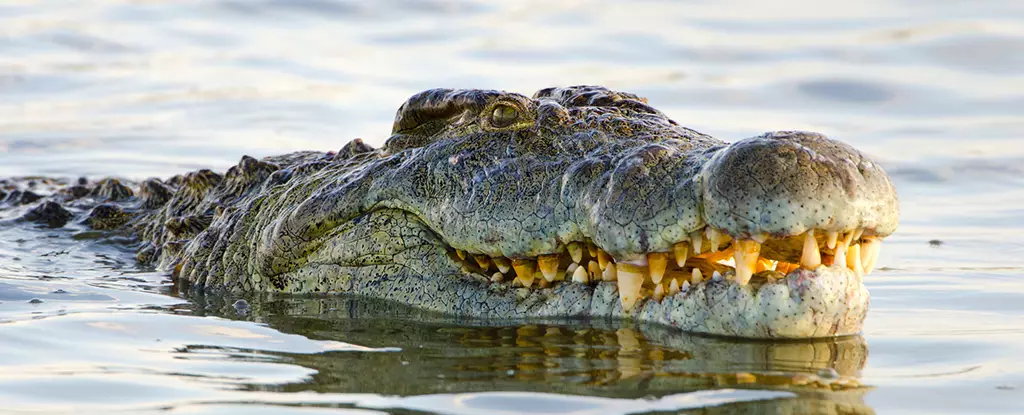The crocodile, often seen as a fearsome predator of the waterways, takes on a curious charm through its signature smile—a feature that belies its fearsome reputation. But the mechanics behind this crocodilian feature are as complex and fascinating as the creature itself. Researchers from the University of Geneva have recently explored the anatomical and embryological intricacies of crocodile head scales, shedding light on how these reptiles acquire their distinctive appearance. This article will delve into the innovative scientific methods used in this study, the underlying biological processes responsible for the crocodile’s unique head scales, and their implications for evolutionary biology.
Crocodiles possess a highly specialized integumentary system that sets them apart from other reptiles. The head scales of these creatures are not fashioned through the same genetic processes that dictate the formation of feathers in birds or fur in mammals. Instead, the irregular polygonal scales of a crocodile’s head are formed by mechanical properties of the skin, offering a point of differentiation in reptilian morphology. Previous research by Michel Milinkovitch and his team suggested that these anatomical features arise from specific interactions in the embryos’ skin layers, particularly from structures known as placodes—localized areas of thickened skin.
The study illuminates the mechanical flowering of these scales, suggesting tensions during growth bear a resemblance to human experiences of stretch marks, a notion that was ultimately discarded. What replaced this perspective was a newfound understanding of compressive mechanical instabilities, which demonstrates how the head scales emerge from the skin tightening over the underlying bone structure, a process markedly different from other vertebrates.
One of the most intriguing aspects of this research is the methodology employed by the scientists. To probe deeper into the formation of crocodile head scales, they conducted experiments by injecting Nile crocodile eggs with epidermal growth factor (EGF). This protein is known to stimulate the growth and stiffness of epidermal layers, resulting in an exaggerated form of the regular scale formation that leads to unique patterns. This creative application of biological science illustrates how manipulating one factor in the embryonic development process can lead to different anatomical outcomes.
As the research progressed, the team observed that the patterns resulting from the EGF treatment reflected a complex interplay between skin growth and skeletal development. The head scales exhibited labyrinthine formations, inherently different from those found on normal Nile crocodiles. These discoveries were essential not only for understanding crocodile anatomy but also provided significant insight into the broader mechanisms of skin development in reptiles.
The findings of this study raise important questions about the evolutionary trajectories of various crocodilian species. The researchers propose that differences in head scale patterns among various crocodilians could be attributed to evolutionary adaptations in embryonic skin mechanics. This suggests that natural selection might favor particular skin growth patterns, ultimately influencing how these reptiles have adapted to their respective environments over millions of years.
This research also opens up new avenues for understanding how physical characteristics are influenced by both genetic programming and mechanical processes during development. As we expand our knowledge of these systems, we gain insights into the evolutionary pressures that have shaped not only crocodiles but also the animal kingdom at large.
The smile of a crocodile is more than a mere physical trait; it is an intricate tapestry woven from layers of biology, mechanics, and evolutionary forces. Through advanced experiments and intricate observations, scientists have begun to decipher the complexities of how these reptiles acquire their extraordinary appearance. This research not only enhances our understanding of crocodilian biology but also deepens our appreciation for the incredible adaptations that exist in nature. As science continues to advance, studies like these remind us of the intricate balance between form and function in the evolutionary narrative of life on Earth.


Leave a Reply